Last week, Garmin hosted members of the cycling media in Canada at its Cochrane, Alberta, facility and the nearby Canmore Nordic Center to introduce its new Edge MTB cycling computer. This gave us the opportunity to meet with the engineers and product managers behind the development of the brand’s first mountain bike-specific GPS unit, and to get some hands-on experience using it on the trails.
The new Edge MTB joins Garmin’s growing family of Edge cycling computers with a compact, robust, and familiar design along with a host of mountain bike-oriented navigation and training features aimed squarely at enduro and downhill mountain bikers. It’s strikingly similar to the existing Edge 540 in function, though slightly smaller in form and loaded with features that set it apart from its siblings and competitors.
But most cycling computers already work well enough for mountain biking, so why create the Edge MTB in the first place? Garmin’s Susan Lyman sums it up by saying, “Mountain biking continues to grow in popularity around the world, and that’s why we’re excited to add Edge MTB to our lineup of innovative cycling products. Designed by mountain bikers, for mountain bikers, our latest bike computer is purpose-built for those looking to improve their technical skills and speed on the trails. With powerful 5 Hz GPS recording, colorful trail mapping, mountain bike metrics, training plans, and recovery insights, Edge MTB is ready for the next ride.”
So, how does the Edge MTB differ from other models in the lineup? Let’s dig in to the details.
Garmin Edge MTB Tech Details

Garmin says the Edge MTB is their “most compact and lightest production cycling computer.” It is indeed relatively compact, measuring 2” W x 3” L x 0.75” T (51 x 78 x 19 mm). The head unit weighs just 56 g on my scale. Interestingly, the much simpler Edge 130 is both smaller and lighter, but the Edge MTB is the smallest and lightest with a color screen and more advanced feature set.
The 2.1” diagonal color display has a Corning Gorilla Glass screen for enhanced impact and shatter resistance. The overmolded rubber buttons resist moisture, mud, and grit. It attaches with a standard quarter-turn mount, and it comes with three mounting options. These include the standard bolt-on over-stem/out front mount (44 g), as well as a top tube mount to bolt directly to bosses (37 g) or strap onto the top tube with the included rubber strap (+ 21 g). This allows riders to attach the Edge MTB in one of the most protected places on the bike.

Since many mountain bikers wear gloves and are often likely to be exposed to precipitation and/or mud, Garmin opted to give the Edge MTB a button interface. It has the exact same seven-button layout as the Edge 540 and previous Edge models, so those familiar with that will feel right at home. Skipping the touchscreen also helps to keep the price a bit lower. Like most modern devices, the Edge MTB charges with a USB-C cord. Battery life is solid and claimed at 14 hrs in demanding 5Hz and up to 26 hours in battery saver mode.
Like other models in the Edge lineup, the Edge MTB uses multi-band GNSS for location accuracy. It also has 32 GB of internal memory for all of its preloaded maps and data storage.
New MTB Profiles


Like the other Edge computers, the Edge MTB is intended to be highly versatile, and multi-facted riders will be happy to know it can be used for any type of riding. It has all of the standard cycling profiles, including road, gravel, indoor, and mountain bike, plus Garmin added Downhill, Enduro, and E-Enduro profiles to the list.
The Downhill profile is made for riders using chairlifts or shuttles to reach the top of their descents. This mode automatically pauses the timer and doesn’t record distance or other stats while riding the lift or in a shuttle vehicle. It resumes recording when heading downhill, logging runs with 5Hz GPS, and providing a last-run summary so you can compare stats.
The Enduro and E-Enduro profiles record everything but trigger ascent and descent with a press of the lap button. Descending automatically triggers 5Hz GPS data logging, and riders can track total ascent and descent from each run and the course of the entire ride. The E-Enduro profile automatically logs the ride as an ebike activity.
5Hz GPS Tracking
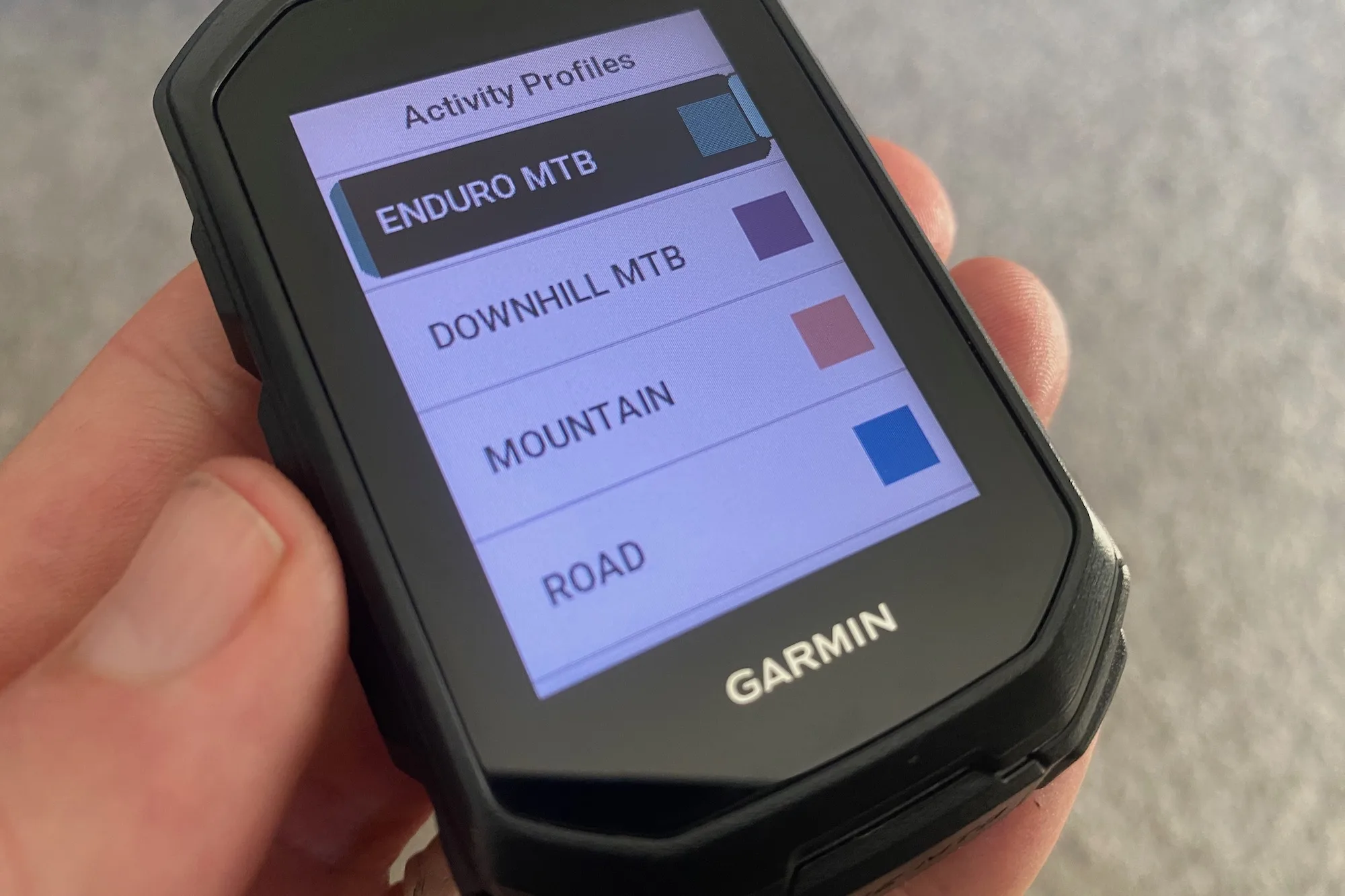
In those new profiles, the Edge MTB automatically logs descents in 5Hz GPS. What is 5Hz GPS, and how is it different? Most GPS units log tracking info in 1Hz, which is one location sample per second. 5Hz takes 5 location samples per second, resulting in more precise and detailed tracking, particularly at high speeds or tight/twisty singletrack trails.
On the climbs, the Edge MTB still logs location data in 1Hz, as the speeds are generally slower. This also helps to conserve battery, as 5Hz GPS uses slightly more energy.
Virtual Timing Gates
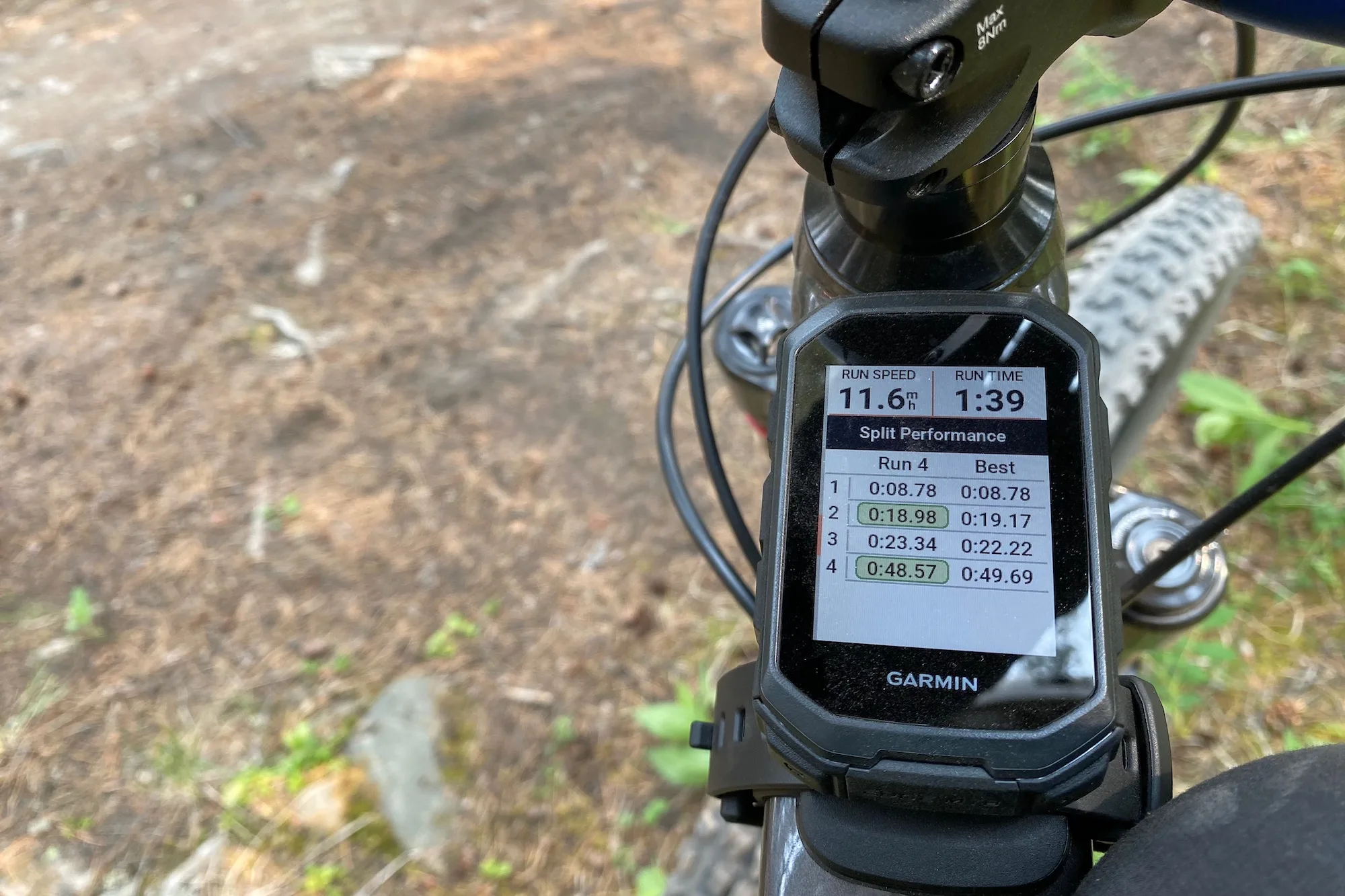
For competitive gravity-oriented riders, the new Timing Gates feature allows users to collect and compare real-time training data. Riders can walk or ride a course and set up to ten timing gates (plus a start gate) along it. These gates are saved on the device for riding on the next laps or anytime in the future. During a ride, you can activate the timing gates feature to compare splits and runs back-to-back or over time.
This gives competitive riders immediate feedback on line selection and other variables that may impact speed and performance. You can compare splits right on the device or later on in the Garmin Connect app. And, while this feature is clearly geared toward gravity disciplines, it seems like it could be just as useful for competitive cross-country racers seeking marginal gains on the race course.
Navigation
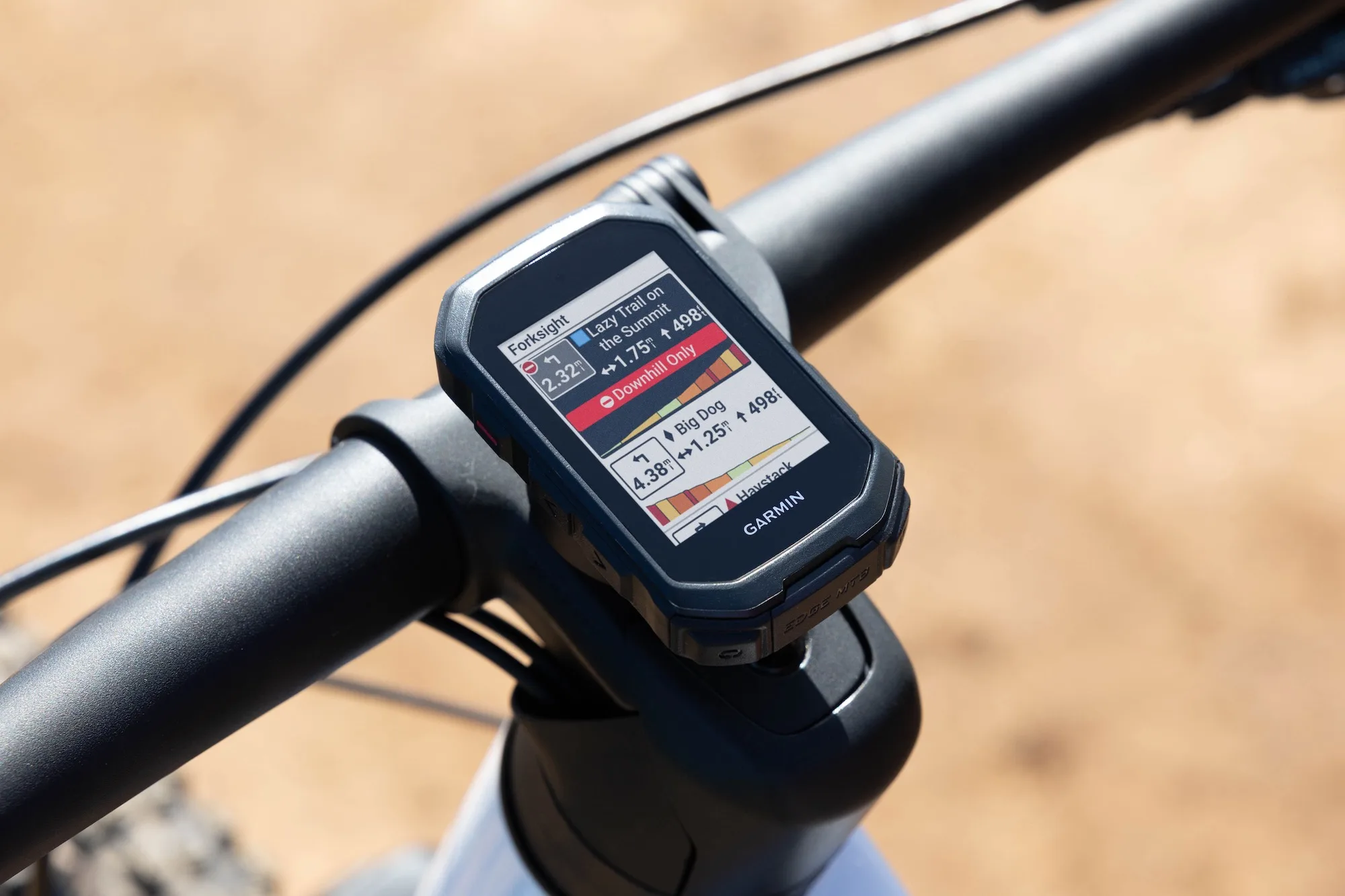
In addition to the preloaded Garmin TopoActive maps for paved and unpaved roads, the Edge MTB comes preloaded with Trailforks maps, so you’re always ready to navigate in unfamiliar areas. Building on that, the enhanced ForkSight feature provides detailed information from Trailforks about upcoming trails (trail names, distance, vertical gain/loss, and an elevation profile), so you can be informed about what’s coming and choose your route accordingly. This could be quite helpful for some riders when exploring new-to-them trail systems.
Another new feature is a post-ride trail breakdown. When Trailforks data is present, this feature gives you a summary of the trail difficulties ridden. Of course, it also features similarly robust navigation features as Garmin’s other Edge models for turn-by-turn directions, ClimbPro detection, and plenty more.
Other Features
While not new to the Edge MTB, it does include Garmin’s MTB dynamics. This feature provides metrics like jump count, jump distance, and hang time, as well as Grit and Flow scores. It also includes other expected features like Group Tracking, LiveTrack, and Incident Detection, plus it is compatible with Garmin’s line of Varia radars and smart lights.
And like any other Garmin Edge computer, the Edge MTB connects to your phone through the Garmin Connect app, where you can customize just about everything to your liking. Setting these things up involves a bit of faffing around, but it’s worth taking the time to dial everything in to your needs and preferences.
Garmin Edge MTB – First Impressions
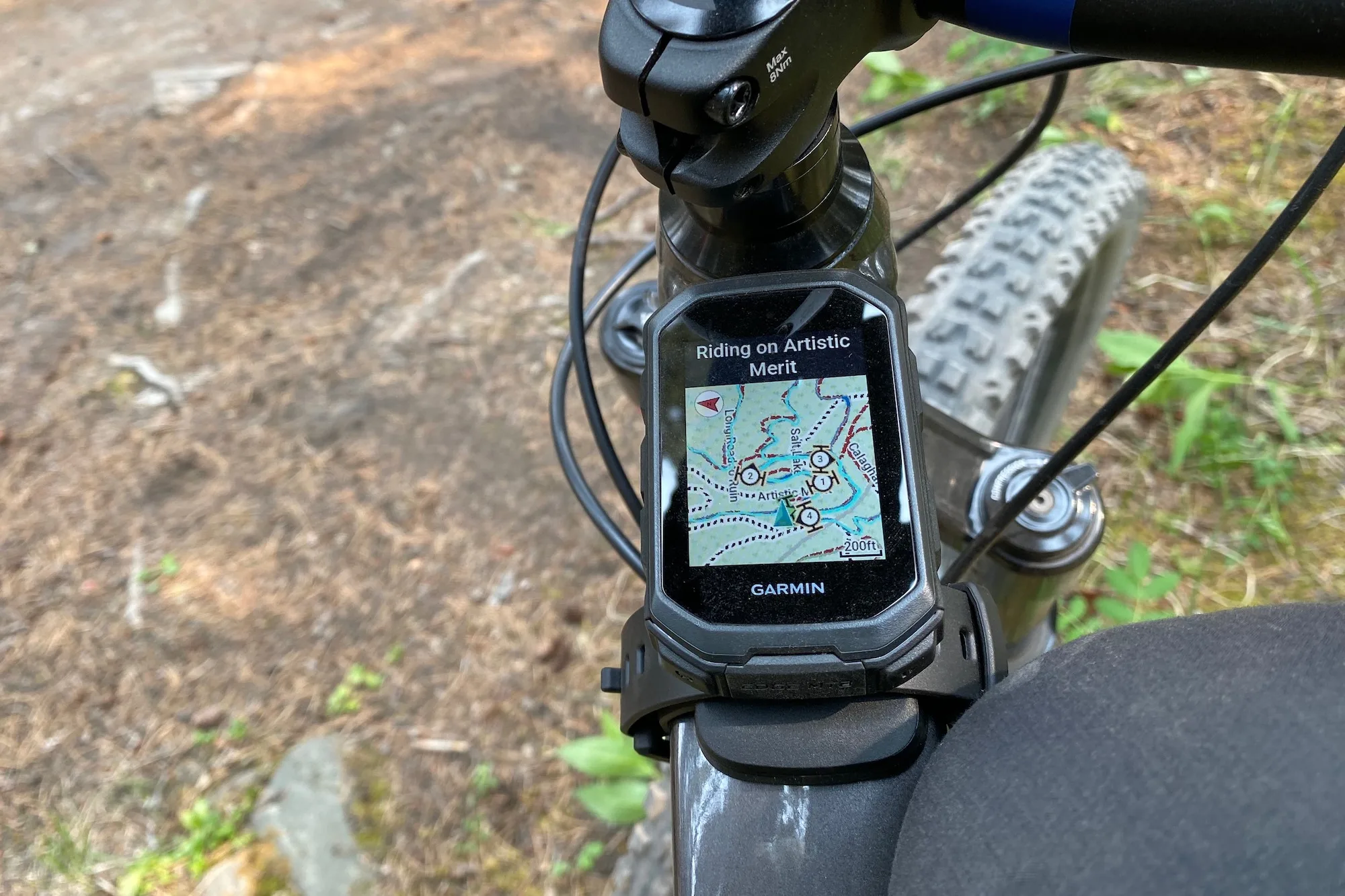
My experience with the new Edge MTB computer is somewhat limited, but I’ve spent enough time using it to get a feel for how it operates. While in Canada, the Garmin folks walked us through some of its more unique features and showed us how to use them. Two days of test riding allowed me to familiarize myself with the various mounting options, user interface, and the new mountain bike-specific features.
First, it’s a compact and relatively streamlined little unit. It’s lightweight and small enough that it’s fairly unobtrusive on the bike, wherever you choose to mount it. I appreciate the included mounting options, too. While many will love having it mounted over the stem, I really liked being able to mount it on the top tube, where it felt a bit more protected and wasn’t quite as visible. And if you have bosses on your top tube, the direct mount is super clean.
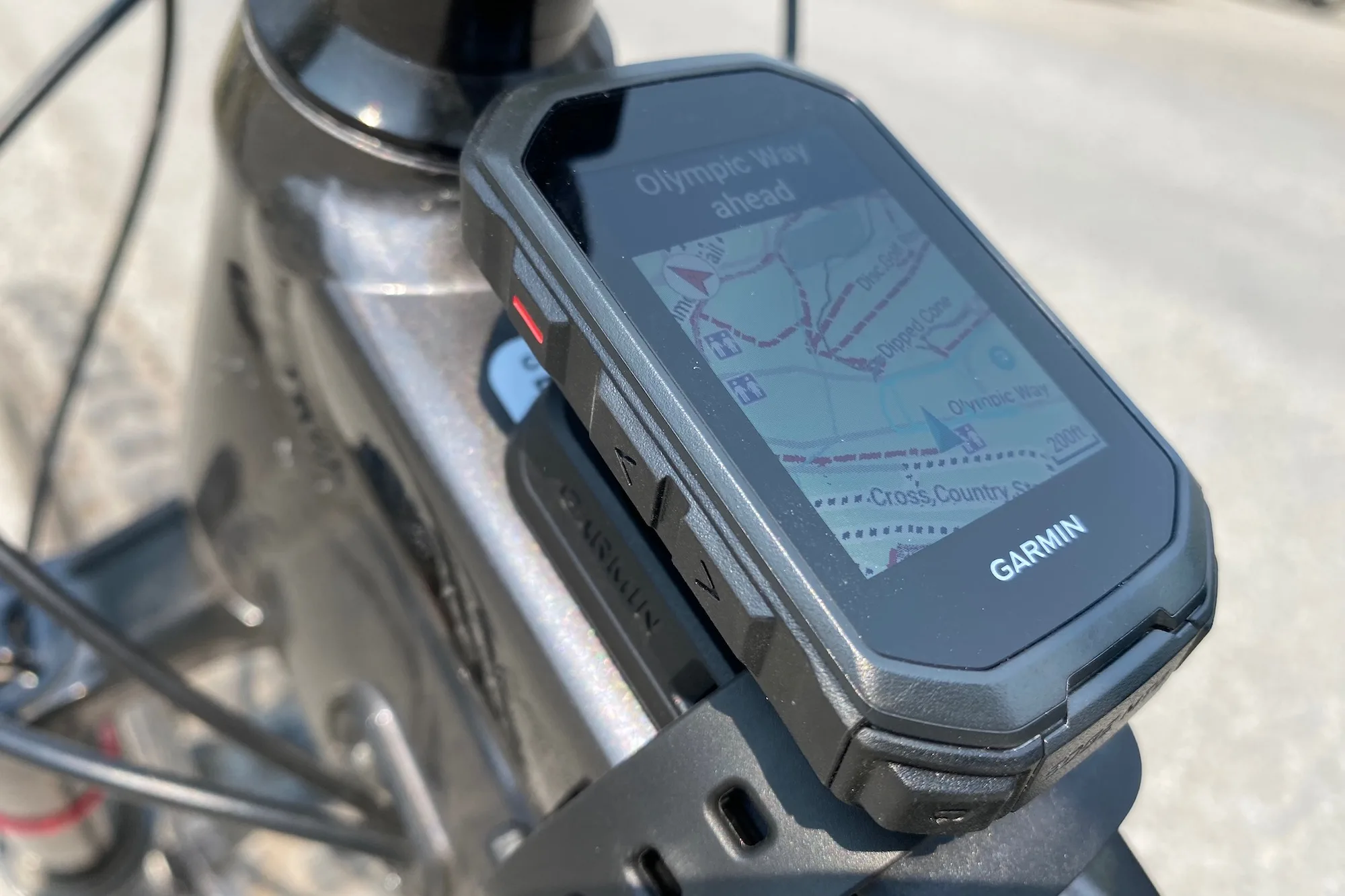
I understand the reasoning behind going with a button-only interface. The screen is fairly small, and most mountain bikers wear gloves. It makes sense. That said, Garmin’s button layout isn’t the most intuitive, and it takes a bit of practice to get proficient at using the Edge MTB. The same is true of most cycling computers with buttons, and it certainly gets much easier the more you use it. And if you’re already familiar with the button interface of other Garmin models, it’ll be a smooth transition. Still, I definitely fumbled around a bit right after I pulled it out of the box.
The 2.1” screen is far from the biggest, but it’s vibrant and easy to read. When comparing split times using Timing Gates or looking at any of the data pages, I had no difficulty seeing everything clearly, even through my aging eyes. It works pretty well for maps, too, although it felt a bit small at times when zoomed out and searching around for nearby trails. ForkSight also seemed to work quite well, with upcoming trails popping up on the screen as I approached every trail junction.
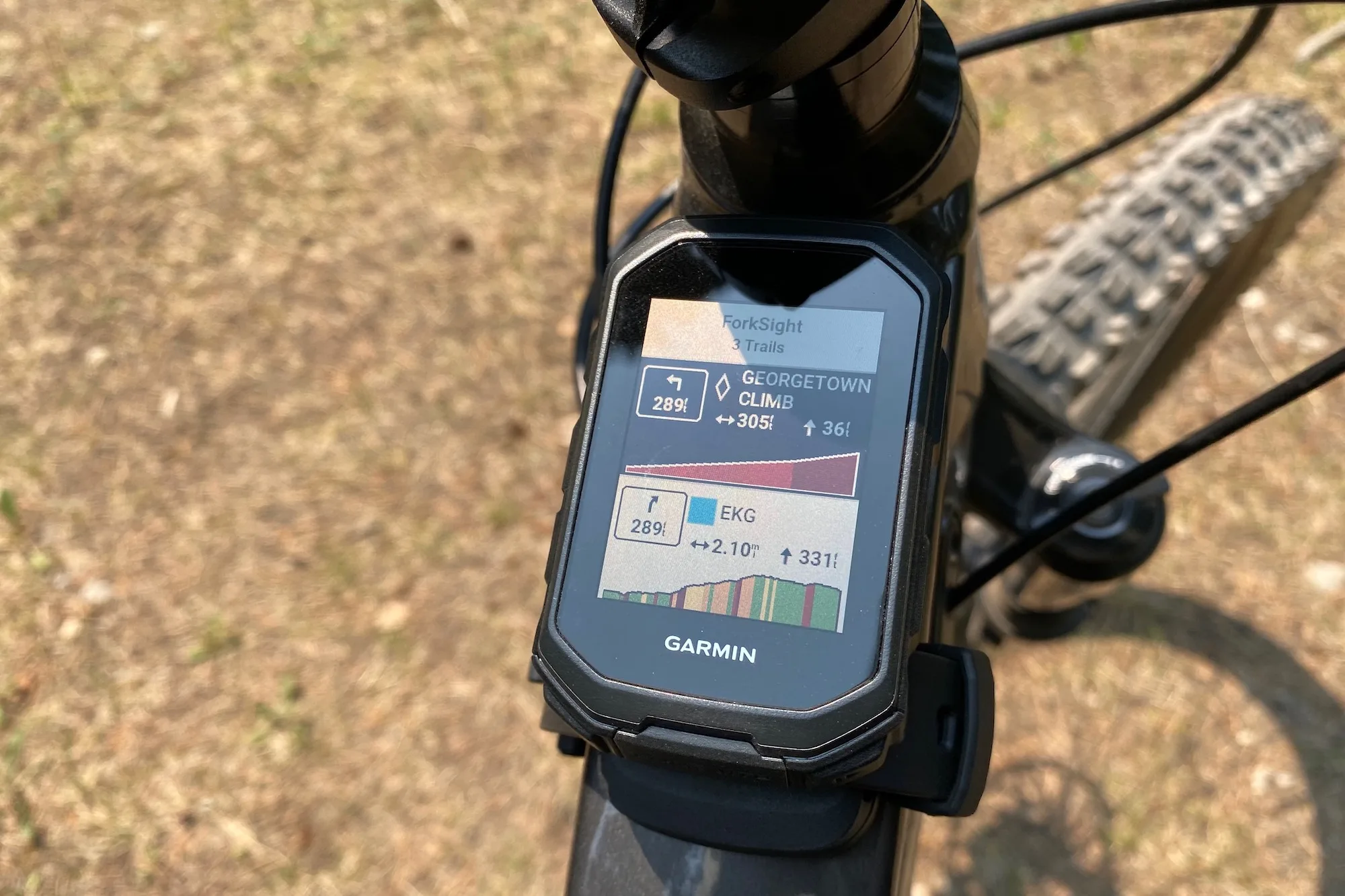
The Timing Gates feature is really slick and, in my opinion, one of the highlights of the Edge MTB. Not only is it relatively easy to use, but I don’t know of another way to create timing splits on any trail, anywhere, any time you want. It’s like being able to set up your own timing system with the push of a few buttons. I could see this feature appealing to lots of riders, but especially competitive enduro or downhill racers seeking to gain speed or improve technique.
I was also impressed by the performance of the 5Hz GPS logging. While I’ve never been that fussed about the precision of my GPS tracks, 5Hz is noticeably better. In a side-by-side comparison, the 5Hz track was significantly smoother than the jerkier line of 1Hz. While this may be inconsequential to many, it may prove to be beneficial to those pushing their limits during training sessions.
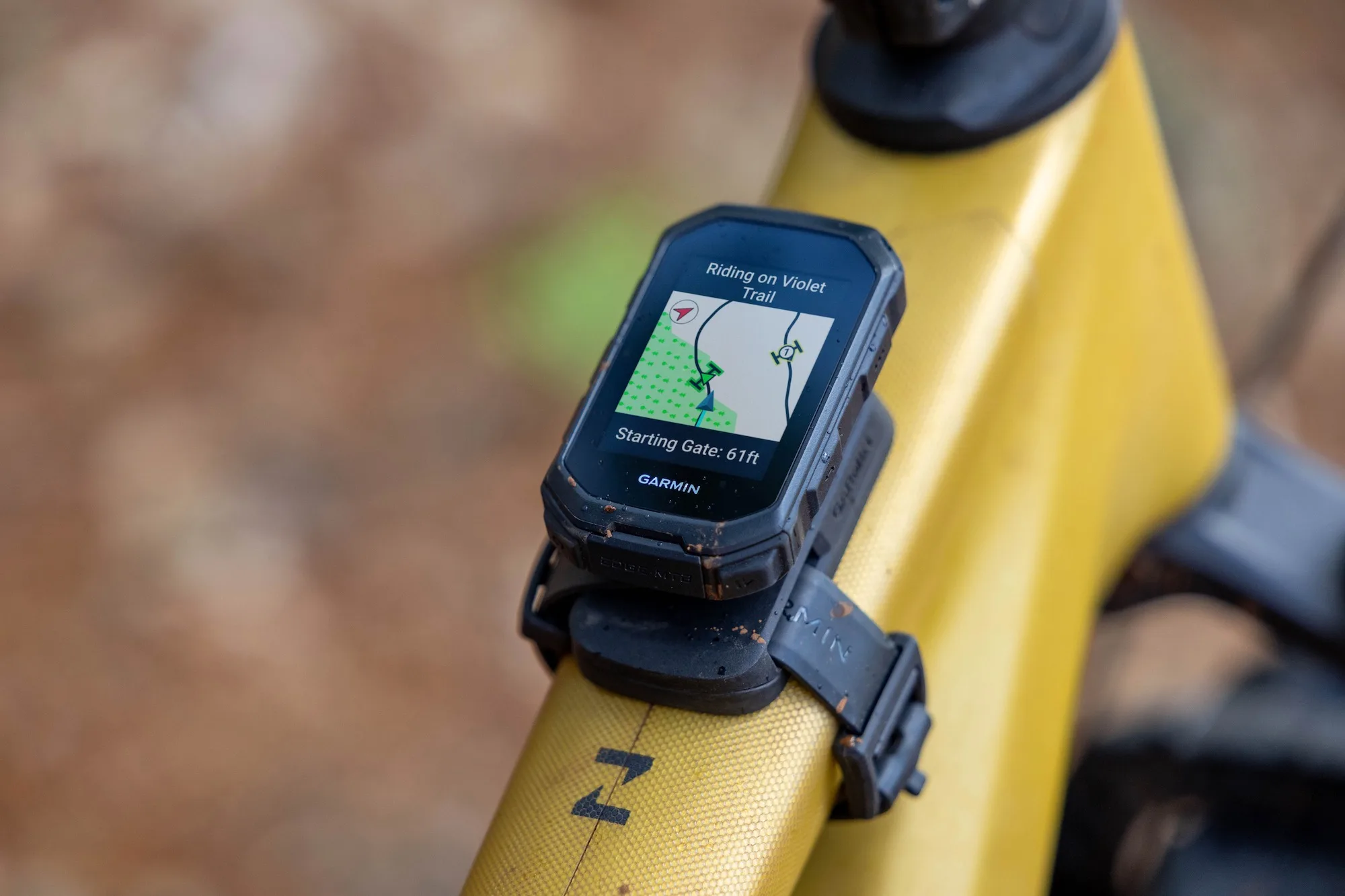
Overall, I think the new Edge MTB is an interesting new model for mountain bikers to consider when searching for a new bike computer. Whether you’re a racer or a performance-minded rider, it’s a compact and rugged little unit that packs some unique features that many mountain bikers might find quite useful.
Garmin Edge MTB: Pricing and Availability
The Edge MTB retails for $400 and is available now. You can learn more about it or purchase one on the brand’s website or at any of Garmin’s brick-and-mortar or online retail partners.
